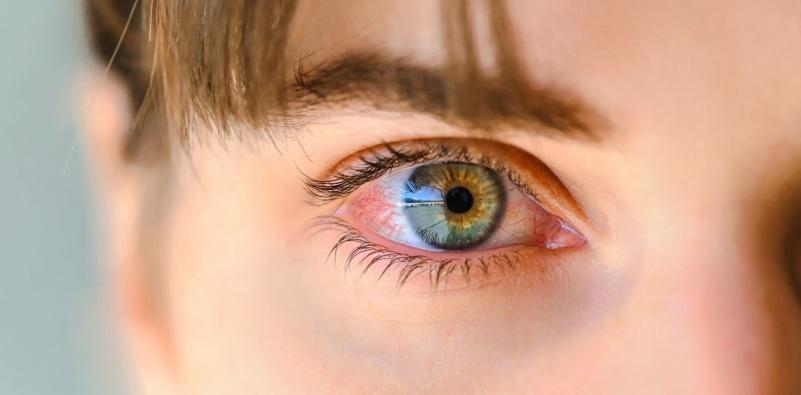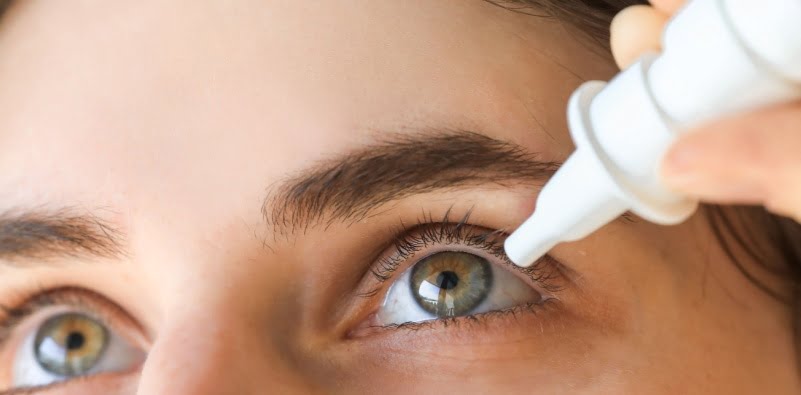Redness in the eyes can be a concern for many, but it often signifies more than just looking tired. In particular, knowing what this is and how to treat red eyes is essential for maintaining optimal eye health and comfort.
What Is Red Eye?

Red eye is a common term that refers to the appearance of red, bloodshot, or irritated eyes caused by the enlargement or inflammation of small blood vessels on the eye’s surface. While often not dangerous, red eye can be a symptom of an underlying problem that may need further attention.
In addition to the characteristic redness, individuals with eye redness can experience other symptoms like eye pain, itching, swollen eyes, and even blurred vision. Observing these symptoms and noting any changes in eye health is important, as they may indicate something more severe is occurring.
Understanding The Causes Of Red Eye
There’s a multitude of reasons why someone may develop red eyes. The cause can be as simple as an allergy or a sight-threatening condition like glaucoma. Here’s a quick breakdown:
Allergies – Allergic reactions to various environmental triggers, such as pollen and pet dander, can lead to redness and swelling of the eyes.
Dry eyes – When your eyes aren’t producing enough tears or are producing poor quality tears, the result is a drying effect that can inflame the eye’s surface, leading to redness.
Conjunctivitis – The more glamorous name for “pink eye,” conjunctivitis refers to inflammation of the thin, clear covering of the white part of the eye and the inside of the eyelids.
Blepharitis – This is inflammation of the eyelids, leading to redness, itching, and irritation.
Eye injuries – Anything from a simple poke to more serious trauma can result in redness, which is your eye’s way of signaling it’s not feeling too great.
Glaucoma – Though not as common as other conditions, glaucoma, particularly acute closed-angle glaucoma, can lead to ‘glaucoma red eye,’ characterized by a distinct reddening alongside severe eye pain and other symptoms. This specific form of red eye is a critical indicator of the condition, underscoring the need for immediate medical attention.
When To Seek Help
Red eye usually isn’t a medical emergency; however, there are instances when it’s best to consult with an eye care professional. If you experience any of the following, schedule an appointment:
- Visible signs of infection
- Tenderness or pain around the eyes
- Light sensitivity
- Fever or sickness
- Prolonged discomfort lasting over a week
Red Eye Treatments

A few at-home techniques can ease discomfort if your red eyes are not an emergency:
Use artificial tears to provide lubrication and comfort, especially if you have dry eyes.
Try antihistamine drops, which can help manage red eyes associated with allergies.
Applying a cool compress can soothe and reduce swelling.
Clean your eyelids regularly to address blepharitis and reduce inflammation.
Using a dehumidifier can manage environmental factors that contribute to redness.
Wash your hands frequently to avoid spreading infection.
Avoid using contact lenses or cosmetics, which can exacerbate irritation.
Do not rub your eyes, as this can worsen redness or spread infection.
Contact Family EyeCare, Quincy, IL
If red eyes interfere with your daily routine, don’t hesitate to contact us. Our eye doctors can provide personalized advice and intervention that best suits your eye health needs.
Red eyes may be common, but they are manageable. By understanding the causes and treatments available, you can take control of your ocular health. Remember, while home remedies can be helpful, they are not a replacement for professional care when you need it most.
